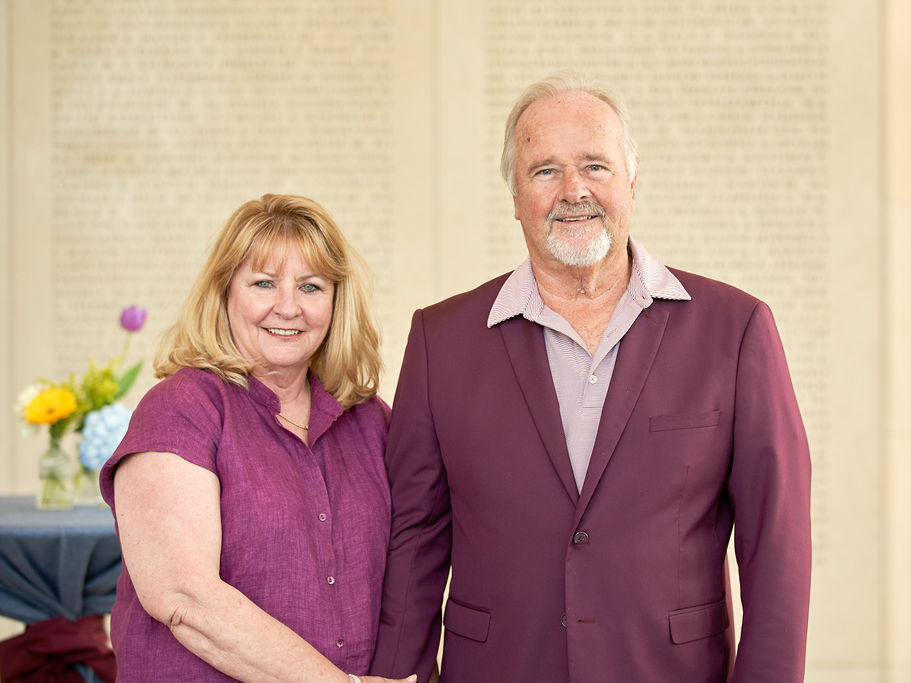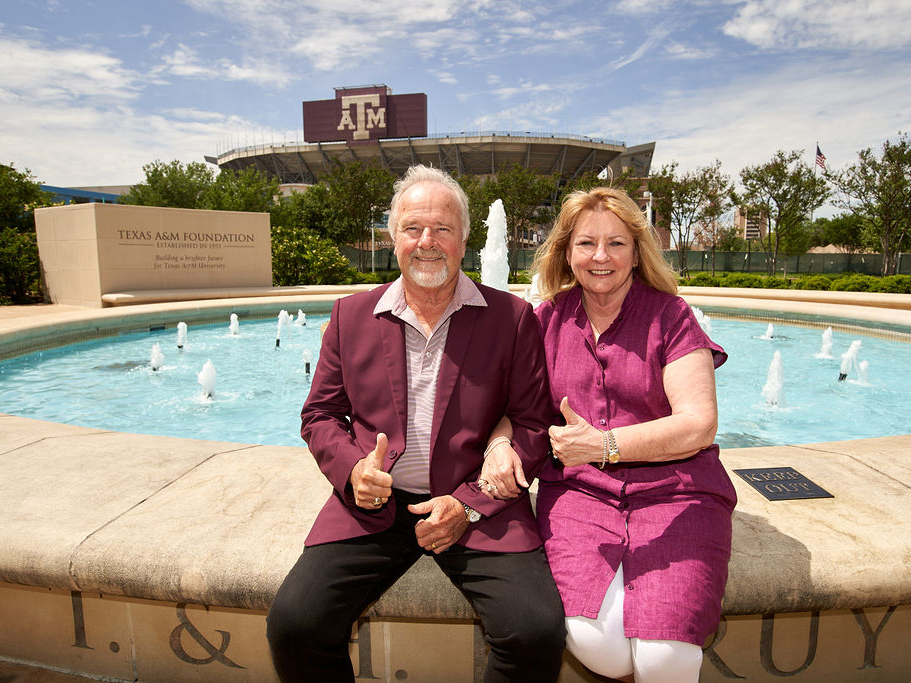Texas A&M Graduates Support Future Aggie Veterinarians, Entrepreneurs
Story by Rachel Knight, VMBS Communications

Photos by Butch Ireland
Pam ‘75 and Larry ‘73 Little have funded some of the largest scholarships in the history of both the Texas A&M School of Veterinary Medicine & Biomedical Sciences (VMBS) and Mays Business School with a $4 million donation made through the Texas A&M Foundation (TAMF).
The scholarships will support both future Aggie veterinarians and future Aggie entrepreneurs in their higher education studies.
“Veterinary students graduate from the VMBS with less student debt than their peers across the United States thanks to the generosity of donors like Pam and Larry Little,” said Dr. John R. August, the Carl B. King Dean of Veterinary Medicine at the VMBS. “Their commitment to our veterinary students ensures that Aggie veterinarians graduate ready to serve thousands of animals across the state of Texas. We cannot thank them enough for their generosity.”
Embodying The Spirit
The Littles personify the first two lines of The Spirit of Aggieland, — “We are the Aggies, the Aggies are we. True to each other as Aggies can be.”
“The Littles truly believe in Aggies and give from the heart in supporting their education at Texas A&M University,” said Chastity Carrigan ‘16, vice president for engagement at the TAMF. “When they meet a student, they are called to the duty of supporting them. We’re all taught at Texas A&M that Aggies help Aggies, and they truly embody that spirit.”
The $2 million donation that will support the VMBS’ Doctor of Veterinary Medicine (DVM) students highlights the Littles’ Aggie spirit and shared Aggie core values; the scholarships also reflect the soft spot in their hearts for animals and supporting deserving students, with the gift providing 10, $20,000 annual scholarships for DVM students who are studying large animal medicine, equine medicine, and small animal medicine.
“Veterinary school is expensive and requires a level of studying that makes it more challenging for these students to work throughout vet school,” Larry said. “These kids need as much help as they can get, so they can focus on their studies and start supporting the animals who need them when they graduate.”
Empowering Future Aggie Veterinarians

The Littles are both long-time animal lovers who grew up in Bryan-College Station.
“We used to take our pets to the Texas A&M veterinary hospital when I was growing up,” Pam shared. “I have very fond memories of bringing my dogs here with my dad.”
Like Pam, animal lovers from around the world have trusted the Texas A&M Veterinary Medical Teaching Hospital (VMTH) with the care of their animals for more than 100 years. The VMBS’ tradition of veterinary excellence has ranked the institution No. 4 in the United States, No. 7 in the world, according to the 2024 Quacquarelli Symonds (QS) World University Rankings in veterinary science.
“Texas A&M is a leading veterinary hospital in the nation,” Larry said. “Pets are a population that is growing, so we need to keep pace and support our future veterinarians. It’s just the right thing to do.”
Supporting Aggie Veterinary Excellence
The VMBS is home to one of the largest DVM programs in the nation, with 180 students accepted each year, and is home to one of the most successful classes annually, with the DVM Class of 2023 receiving the highest pass rate in the nation for the North American Veterinary Licensing Examination.
In addition to rigorous coursework that shapes DVM students into compassionate, service driven veterinarians, students also gain hands-on learning experiences at the VMTH where they help treat more than 25,000 cases each year.
“It means a lot to me to be able to support future Aggie veterinarians, because of our love for animals,” Pam said. “People need to take care of their animals. One of the ways that people can be responsible for their pets is to take care of them physically by working with a veterinarian.”
“It’s just a necessary part of life,” Larry added. “When you get sick, you go to the doctor. When your pet gets sick, you make sure they go to the veterinarian. It’s essential that everyone do what is within their means to help make sure that happens and supporting veterinary students that can take care of the animals is a good way to do that.”
###
For more information about the Texas A&M School of Veterinary Medicine & Biomedical Sciences, please visit our website at vetmed.tamu.edu or join us on Facebook, Instagram, and Twitter.
Contact Information: Jennifer Gauntt, Director of VMBS Communications, Texas A&M School of Veterinary Medicine & Biomedical Sciences, jgauntt@cvm.tamu.edu, 979-862-4216


